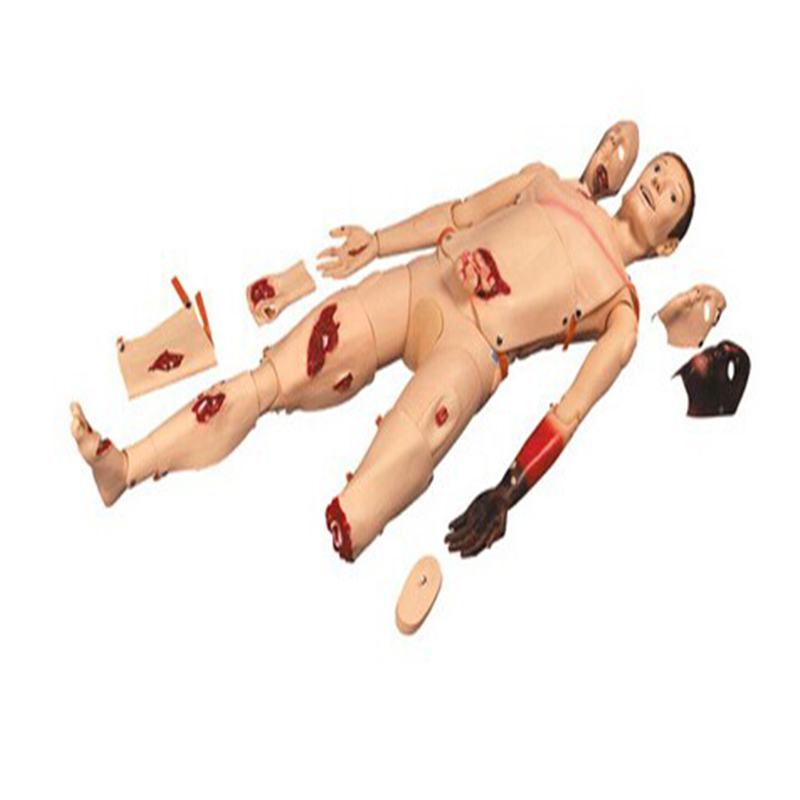Welcome to visitShanghai Chinon medical Model & Equipment Manufacturing Co., LTD
Trauma simulators have become more and more widely used in medical training. Their realism and operability allow medical staff to get better training in actual operations. However, how to effectively apply trauma simulators in actual operations is still a question worthy of further exploration.

First, we need to ensure that the application scenario of the trauma simulator matches the real treatment scenario. This means that we need to have an in-depth understanding of various situations that may be encountered during actual treatment, including patient injuries, treatment processes, team collaboration, etc. Only when we have a full understanding of the real scene can we set up a more realistic simulation scene for the trauma simulator.
Secondly, we need to pay attention to the psychological changes of medical staff during simulated operations. During the actual treatment process, medical staff may face tremendous psychological pressure and tension. Therefore, in simulation operations, we also need to simulate this tense and stressful environment so that medical staff can experience the real treatment atmosphere in the simulation. In this way, they can deal with various situations more calmly and confidently when facing real patients.
In addition, we also need to focus on improving the skills of medical staff in simulated operations. The trauma simulator can not only simulate various injuries and physiological reactions, but also provide intelligent feedback based on the operations of medical staff. Therefore, in simulated operations, we can set different operating difficulties and complexities to allow medical staff to improve their operating skills through constant challenges. At the same time, we can also combine the results of simulated operations to provide targeted guidance and training for medical staff to help them better master treatment skills.
In addition to the above aspects, we also need to pay attention to the innovation and development of trauma simulators in practical applications. With the continuous advancement and updating of medical technology, trauma simulators also need to constantly update and improve their functions and application scenarios. We can combine the latest medical research results and technological advances to add more functions and features to the trauma simulator to make it closer to actual treatment needs.
In short, applying trauma simulators to actual operations requires us to pay attention to many aspects, including the setting of simulation scenarios, psychological changes of medical staff, skill improvement, and innovation and development of simulators. Only in this way can we give full play to the role of trauma simulators in medical training and provide medical staff with a more efficient and practical training experience.
|
NEXTпјҡHeart Anatomy Model - Insights into the Mysteries of the Pump of Life
LASTпјҡExplore the hand acupuncture model: hand meridians and acupoints at a glance |
Return list |